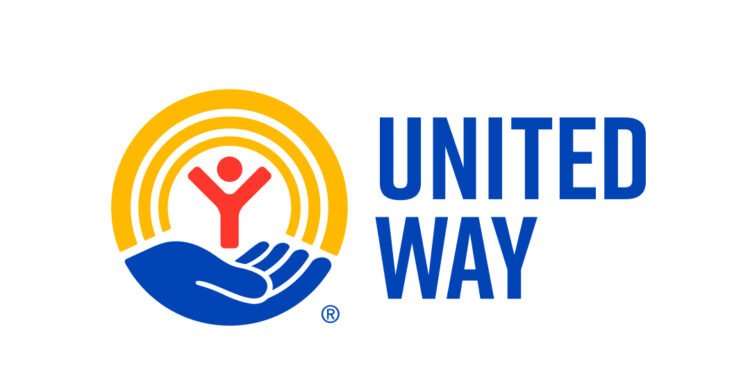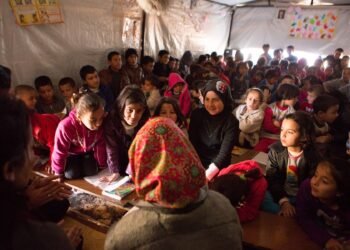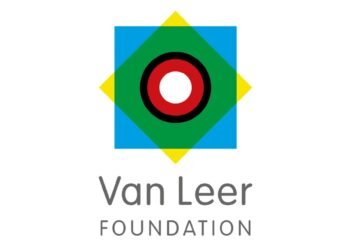What if one organization could unite nearly 1,800 local groups across 40 countries to tackle humanity’s toughest challenges? United Way Worldwide proves this vision isn’t just possible—it’s happening today.
Founded in 1887 in Denver, Colorado, this remarkable network now operates from its Alexandria, Virginia headquarters under President and CEO Angela F. Williams’ leadership. With $5.196 billion in 2021 revenue, the organization demonstrates massive financial scale and operational reach.
The core belief driving this global effort is simple yet powerful: communities themselves hold the key to lasting change. By bringing people together, United Way creates pathways for better lives through collective action and resource mobilization.
From disaster response to youth opportunity programs, the impact spans continents and generations. This introduction explores how this unique model works, its current initiatives, and ways you can support its mission.
Key Takeaways
- United Way Worldwide leads a network of nearly 1,800 community-based organizations across 40 countries
- Founded in 1887, the organization now operates from Alexandria, Virginia under CEO Angela F. Williams
- Reported $5.196 billion in revenue during 2021, demonstrating significant financial scale
- Focuses on collective community action to address tough challenges and create lasting change
- Operates through local affiliates that mobilize resources and support tailored to community needs
- Global impact areas include disaster response, health access, and youth opportunity programs
- Employs a unique model that combines global coordination with local implementation
Introduction to United Way Worldwide
A remarkable network of independent local charities operates under a unified banner, creating one of the world’s most extensive philanthropic systems. This interconnected web of community-based organizations represents a unique approach to addressing social challenges through coordinated action.
The scale of this operation is truly impressive. More than 1,800 locally-governed nonprofit entities form this international alliance dedicated to community support. Until 2015, this collective held the distinction of being the largest U.S. charity by public donations, demonstrating its historical significance in American philanthropy.
At the center of this network stands the central coordinating body that provides essential leadership and strategic direction. This umbrella organization offers brand oversight and comprehensive support services to all affiliated members while respecting their operational independence.
Each local affiliate maintains complete autonomy as an independent 501(c)(3) organization. They operate with their own dedicated staff, volunteer boards, and community-specific governance structures. This ensures decisions reflect local needs and priorities.
The relationship follows a franchise-like model where members pay dues for brand usage and access to support services. This system creates a sustainable framework for shared resources while maintaining local control over programming and fund allocation.
Some international partners, like Japan’s Central Community Chest, choose alternative naming while maintaining membership. The classification system categorizes affiliates based on fundraising capacity, with Metro 1 representing the highest tier of organizational scale and impact.
This sophisticated operational model successfully balances local autonomy with global coordination. It enables tailored community responses while leveraging the strength of collective action and shared resources across the entire network.
Our Mission and Vision for Global Communities
At the heart of this global movement lies a powerful mission that transcends borders and unites communities in shared purpose. The organization works to improve lives by mobilizing the caring power of communities worldwide to advance the common good.
This approach recognizes that societal benefits are deeply interconnected. When children succeed in school, families gain financial stability, and health outcomes improve for everyone. These gains create ripple effects throughout entire communities.
The focus remains on creating sustainable, long-term solutions rather than temporary charitable fixes. This strategic approach ensures that investments today continue yielding benefits for years to come.
The vision extends to creating clear pathways for opportunity, health, and financial stability for all community members. Every person deserves access to quality education, healthcare, and meaningful employment opportunities.
This inclusive approach recognizes that everyone has a stake in community well-being. When one segment thrives, the entire community grows stronger and more resilient against challenges.
Specific goals include improving youth education outcomes and expanding access to quality, affordable healthcare. These priorities address fundamental needs that enable individuals and families to flourish.
The mission’s global scope addresses needs across 40 countries and territories through local affiliates. Each community brings unique challenges and opportunities that shape tailored responses.
This work connects to historical roots in community collaboration and federated giving models. The organization builds upon decades of experience in bringing people together for collective impact.
The mission directly guides program development, fundraising strategies, and partnership approaches. Every initiative aligns with the core belief in community-powered solutions.
Impact measurement focuses on community outcomes rather than just funds distributed. Success means tangible improvements in education, health, and economic stability for those served.
Key Impact Areas of United Way Worldwide
Four distinct yet interconnected focus areas form the backbone of this organization’s community transformation strategy. Each domain addresses critical needs while working together to create comprehensive support systems.
Youth Opportunity and Education
Early childhood development through career readiness represents a primary investment area. Programs target literacy improvement and educational childcare access.
Women United initiatives specifically boost childhood reading skills. These efforts create pathways from preschool to professional success.
The goal remains increased graduation rates and workforce preparation. Quality education serves as the foundation for lifelong achievement.
Health Access and Resources
Nutritional support and quality care availability define this critical domain. Communities receive help securing nutritious food options.
Health education programs connect individuals to reliable care providers. These services address both immediate and long-term wellness needs.
Preventive care and treatment access improve overall community health outcomes. Strong physical well-being enables greater life participation.
Financial Stability and Job Training
Skills development and employment placement services offer economic pathways. Financial literacy education provides tools for money management.
These programs aim for economic peace of mind and family security. Job training creates opportunities for career advancement.
Financial freedom becomes achievable through targeted education and support. Stronger economic futures benefit entire communities.
Community Resilience and Disaster Response
Crisis support and environmental protection measures build local durability. Disaster preparedness training helps communities weather emergencies.
East Tennessee disaster relief demonstrates practical recovery assistance. Families receive help returning home after catastrophic events.
Environmental initiatives protect communities against future challenges. Resilience planning ensures quicker recovery from disruptions.
These impact areas work together to create holistic community strengthening. Education, health, financial security, and resilience form interconnected pillars of support.
How United Way Worldwide Operates
This global organization uses a unique operational model that balances local independence with centralized coordination. The system enables tailored community responses while maintaining consistent standards across the network.
Local Affiliate Network Structure
Each local United Way operates as an independent 501(c)(3) nonprofit organization. They maintain their own boards, staff, and governance structures.
This independence allows for community-specific decision making. Local leaders understand their area’s unique needs and challenges.
The network includes nearly 1,800 such independent organizations worldwide. They work together while maintaining local control over programs and funds.
Membership and Brand Oversight
United Way Worldwide sets specific membership requirements for all affiliates. These include regular audits and marketing restrictions.
U.S. affiliates contribute 1% of raised funds as membership dues. This supports centralized services and brand management.
The organization uses a classification system based on fundraising volume. Metro 1 represents affiliates raising over $9 million annually.
Some international partners choose alternative names while maintaining membership. Japan’s Central Community Chest follows this approach.
This franchise-like model provides brand promotion and strategic guidance. Affiliates gain access to resources, training, and national partnerships.
The system ensures both local autonomy and global consistency. Communities receive tailored support while maintaining organizational integrity.
Fundraising Strategies and Methods
This organization employs a sophisticated approach to resource generation that maximizes donor participation while maintaining operational efficiency. The system combines traditional giving methods with innovative workplace solutions.
Workplace campaigns represent the cornerstone of this fundraising model. Employers actively facilitate employee contributions through structured programs.
These initiatives account for 57% of total donations across the network. Corporate gifts contribute an additional 20% to annual revenue.
Workplace Campaigns and Payroll Deductions
Payroll deduction systems make charitable giving remarkably convenient for employees. The process functions similarly to standard tax withholdings.
Workers complete simple pledge forms during campaign periods. They select donation amounts and specify preference options.
This method ensures consistent contribution collection throughout the year. Regular deductions create sustainable funding streams for community programs.
Designated vs. Undesignated Donations
Donors enjoy flexibility in directing their charitable support. Approximately 25% of U.S. contributions are designated gifts.
These allow supporters to specify particular nonprofits or focus areas. Undesignated donations flow into general community funds.
Volunteer committees allocate these resources based on demonstrated need. This balanced approach respects donor preferences while addressing critical gaps.
The organization also administers the Combined Federal Campaign for government employees. This extends their reach into public sector workplaces.
Historical agreements with partner charities ensure coordinated fundraising efforts. This prevents campaign overlap and maximizes collective impact.
Distribution of Funds and Community Support
Every dollar donated follows a carefully designed path to maximize community benefit. The process begins with a modest administrative fee that covers essential operational costs.
Historical data shows these fees averaged 12.7% in 2002. This percentage may vary by affiliate and fiscal year based on local needs and scale.
Designated donations travel directly to donor-chosen recipients without intermediary discretion. Supporters can specify exact nonprofits or causes they wish to support.
Undesignated funds receive special attention from volunteer committees. These community members assess local priorities to allocate resources effectively.
Education, health, and financial stability often emerge as top funding priorities. Committees use thorough needs assessments to guide their decisions.
Funding takes two primary forms: unrestricted grants and program-specific contracts. The latter requires outcome reporting and regular audits for accountability.
Major historical recipients include respected organizations like the American Cancer Society. The Boy Scouts and Catholic Charities have also received significant support.
The organization has shifted toward program-specific funding to ensure measurable impact. This approach guarantees tangible results for every dollar invested.
Community volunteers drive the entire allocation process. Their local knowledge ensures funds address the most pressing needs.
Transparent reporting maintains donor trust and compliance with regulations. Supporters receive clear information about how their contributions create change.
Historical Roots and Evolution
The journey of this global network began with a simple idea in 1887 Denver. Frances Wisebart Jacobs and other visionaries created the Charity Organization Society. This early effort laid the foundation for modern community support systems.
These early organizations evolved into Community Chests during the early 20th century. Cleveland established the first official Community Chest in 1913. This model promoted federated giving and coordinated charitable efforts.
From Community Chest to Modern Organization
World Wars dramatically shaped charitable giving patterns. War Chests emerged to support military efforts and home front needs. These temporary structures transformed into permanent Community Chests after conflicts ended.
The late 1940s brought another significant evolution. United Funds appeared to consolidate workplace campaigns across multiple charities. Detroit launched the first United Fund in 1949, creating a more efficient fundraising model.
A major rebranding occurred in 1970 when the organization became United Way of America. This change reflected its expanding national presence and broader mission. The new name signaled a unified approach to community challenges.
Key Milestones and Leadership Transitions
Visual identity received a significant upgrade in 1972. Celebrated designer Saul Bass created the iconic logo that symbolized unity and progress. This design helped establish national recognition and brand consistency.
Strategic partnerships accelerated growth throughout the 1970s. The 1973 collaboration with the NFL brought national visibility to community efforts. United Way International formed in 1974 to expand the model globally.
William Aramony’s leadership brought both expansion and controversy. His tenure saw significant brand growth but ended with financial scandal in the 1990s. This period tested the organization’s integrity and public trust.
Reform efforts followed under interim leaders Kenneth Dam and Elaine Chao. They implemented stronger financial controls and transparency measures. These changes restored confidence among donors and communities.
Current CEO Angela Williams continues this legacy of accountability. Her focus remains on global community impact and operational transparency. The network now includes nearly 1,800 affiliates worldwide.
This evolution demonstrates how community support models adapt to changing needs. From local chests to global network, the core mission remains constant. The organization continues empowering communities through collective action.
Organizational Leadership and Governance
Strong leadership and community-driven governance form the foundation of this global network’s success. The system combines professional expertise with local volunteer wisdom to create meaningful change.
Role of CEO Angela Williams
President and CEO Angela F. Williams provides strategic direction for the entire network. Her leadership focuses on empowerment and transparency across all operations.
She works to expand the organization’s impact in communities worldwide. Her vision ensures that local needs remain central to global strategies.
Williams emphasizes measurable results and community-centered solutions. Her approach strengthens both immediate support and long-term development.
Board and Volunteer Involvement
A diverse board of directors offers oversight and guidance at the global level. Members come from business, nonprofit, and community sectors.
Each local United Way operates with its own independent board. Community volunteers staff these boards to ensure grassroots input.
Volunteers play critical roles in fundraising campaigns and fund distribution. They also help implement programs and assess community needs.
This volunteer involvement guarantees local relevance and accountability. Paid staff and volunteers collaborate to achieve mission goals efficiently.
Governance practices have evolved significantly since past challenges. Enhanced integrity measures now build greater public trust.
Training and support maximize volunteer effectiveness and engagement. This investment strengthens the entire network’s capacity for service.
The system represents a powerful blend of professional management and community wisdom. Together, they drive meaningful change in people’s lives.
Financial Transparency and Accountability
Maintaining public trust requires clear financial practices and open reporting. This organization demonstrates its commitment through rigorous accounting standards and accessible financial data.
Multiple revenue streams support the global mission. Workplace campaigns generate over half of all donations through employee participation.
Corporate gifts and membership dues provide additional funding. These diverse sources create financial stability for long-term community investment.
Revenue and Expense Management
The network reported $5.196 billion in revenue during 2021. This substantial amount reflects successful fundraising across all affiliates.
Administrative costs average between 12-13% of total funds raised. These necessary expenses cover operational needs and oversight functions.
Local variations may occur based on community size and program scope. Every dollar maximizes direct community benefit through careful budgeting.
Post-reform measures strengthened financial controls significantly. Enhanced policies prevent misuse and ensure proper fund allocation.
Independent audits are mandatory for all member organizations. This requirement maintains consistent standards across the entire network.
Charity Ratings and Trust
Watchdog groups like Charity Navigator evaluate organizational performance. Their ratings assess efficiency, transparency, and overall impact.
Donors receive clear information about how contributions create change. Impact measurements show real results from every dollar given.
Designation options allow supporters to direct their gifts specifically. This flexibility builds confidence in the donation process.
Public financial reports are available through official channels. Digital platforms provide immediate access to current and historical data.
Leadership under CEO Angela Williams emphasizes accountability at all levels. This commitment ensures continued public trust in the mission.
Global Reach and Local Impact Stories
Across 40 countries and territories, nearly 1,800 independent affiliates bring this organization’s mission to life. Each local group adapts global resources to meet specific community needs.
This network creates powerful change through tailored programs. Success stories show how this approach transforms lives everywhere.
In South Africa, youth empowerment programs boost education outcomes significantly. Children gain skills and confidence through targeted support.
Literacy initiatives help young readers improve their abilities. These efforts create brighter futures for entire communities.
Disaster response teams provide critical aid when crises strike. East Tennessee families received help returning home after emergencies.
Health access programs deliver nutritious food and medical services. Underserved populations gain better care through these efforts.
Financial stability projects offer job training that leads to employment. People build economic security through new skills and opportunities.
Every program reflects local priorities and resources. Volunteers and partners make these impactful stories possible.
Measurement focuses on real transformation in people’s lives. These examples demonstrate the common good in action today.
The organization’s approach combines global scale with local understanding. This creates meaningful change where it matters most.
How You Can Support United Way Worldwide
Three powerful avenues exist for contributing to community betterment through this philanthropic system. Each method offers unique ways to create meaningful change where it matters most.
Donating for Maximum Impact
Workplace campaigns provide the most convenient giving method for many supporters. Employees can set up automated payroll deductions through simple forms.
Online gifts through the official website offer another accessible option. Corporate matching programs can double your contribution’s effect.
Undesignated donations create the greatest flexibility for addressing urgent needs. Volunteer committees allocate these funds to priority areas.
Designated gifts allow support for specific causes or partner charities. Both options provide U.S. donors with potential tax benefits.
Volunteering in Your Community
Local affiliates need community members for various roles. Fund distribution committees represent one valuable opportunity.
Direct service positions help implement programs on the ground. Board membership offers strategic guidance for local operations.
Every local group maintains its own volunteer needs database. Contacting nearby affiliates reveals tailored opportunities.
Advocacy and Awareness Efforts
Sharing information about community challenges makes a real difference. Social media platforms amplify important messages.
Contacting legislators supports policies that advance common good goals. Personal stories create powerful persuasion.
Every voice contributes to collective community empowerment. Awareness campaigns need passionate participants.
All support forms—financial, time, or advocacy—create measurable impact. This network thrives through diverse participation methods.
Conclusion: The Future of United Way Worldwide
Looking ahead, this global network continues its vital mission. Under CEO Angela Williams, innovation and transparency drive progress.
The organization adapts to new challenges like disasters and economic shifts. Digital tools improve donor experiences and operational efficiency.
Strong partnerships with businesses and governments expand community impact. These collaborations create sustainable solutions for pressing needs.
Your support through donations, volunteering, or advocacy makes a difference. Together, we build thriving communities through collective action.
FAQ
What is the primary mission of this organization?
The organization focuses on improving lives by mobilizing communities to advance education, financial stability, and health access for all people.
How does the organization ensure donations are used effectively?
Funds are distributed through a network of local affiliates that assess community needs and support programs with measurable outcomes and accountability.
Can donors choose where their contributions go?
Yes, donors can make designated gifts to specific initiatives or provide undesignated support, allowing local experts to direct resources where they’re most needed.
What percentage of donations goes directly to community programs?
The organization maintains low overhead costs, with the majority of contributions funding direct services rather than administrative expenses.
How does workplace giving through payroll deduction work?
Employees can contribute automatically through payroll deductions, making regular support convenient while often receiving employer matching funds.
What role do volunteers play in the organization’s work?
Volunteers serve on boards, help assess community needs, participate in service projects, and assist with fundraising campaigns at local levels.
How does the organization measure its impact in communities?
Impact is measured through specific metrics in education, financial stability, and health outcomes, with regular reporting on progress toward community goals.
Are donations tax-deductible?
Yes, contributions are tax-deductible to the extent allowed by law, as the organization maintains 501(c)(3) charitable status.
How can someone get help from local community services?
Individuals can contact their local affiliate or access online resources that connect people with available health, education, and financial support services.
What makes this organization different from other charities?
The unique combination of global reach with local implementation, workplace giving infrastructure, and focus on systemic community change distinguishes its approach.





